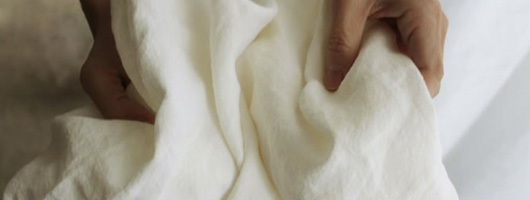今なぜ、
敢えて『made in 浜松』
を
主張するのか。
現在、日本における衣料生産の自給率は3%(2014年時点)
更に繊維の国内自給率は全体の1%にも満たないとされています。

現在、日本における衣料生産の自給率は3%(2014年時点)
更に繊維の国内自給率は全体の1%にも満たないとされています。
製品コストを下げるために製造原価が引き下げられ、海外調達が増加。
今では97%以上を中国を始めとする輸入品によって賄われています。
それと同時に国内繊維産業の事業所や従業者数が激減し、技術者の高齢化と継承者不足もあり、
日本の職人が支えてきた伝統的な技術が次々と失われつつあります。
生地の森はここ遠州、浜松の地で生まれた遠州織物の技術を伝える職人がいる限り、
皆さまに伝えていきたいと考えています。
『made in 浜松』をぜひ身近なものでお使いいただき、職人の独創的な風合いや染め技術を、
生地を通して感じて頂けたら幸いです。
It is because Japan’s clothing manufacturing self-sufficiency rate is currently at three percent (as of 2014).
Moreover, domestic textile self-sufficiency is less than one percent.
In order to lower the costs of finished goods,overseas procurement has been increased,so that manufacturing costs can be reduced.Nowadays,at least 97% of goods are imported,and this is primarily met by China.
At a time when the number of domestic textile manufacturers and workers is rapidly declining, whilst craftsmen are retiring without anyone replacing them, the traditional techniques that Japan’s craftsmen have sustained are gradually being lost.
I want everyone to know about these techniques, which were born right here at “KIJI NO MORI” in Hamamatsu, Enshu, as long a there are still craftsmen around who can teach the art of ‘Enshu fabric’.
It would give me great pleasure if you could sense the unique texture and dyeing techniques in the fabric when you take hold of itwhilst embracing the “made in Hamamatsu” campaign as a part of your everyday life.

素材のありままの魅力を伝えたい

ものづくりは「素材」から。